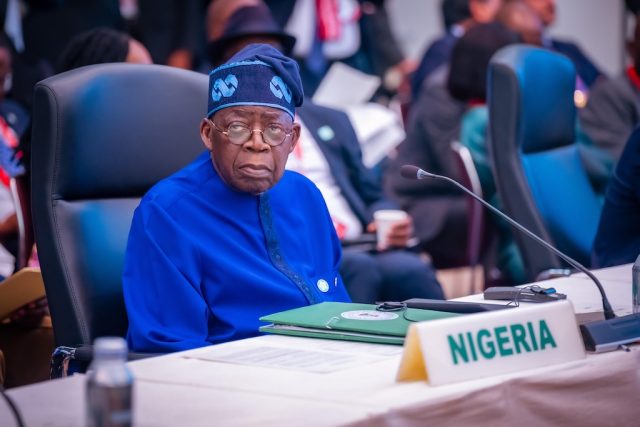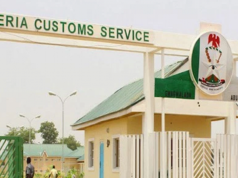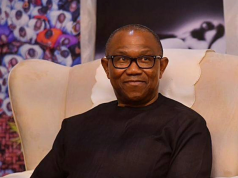By design, Nigeria’s two most consequential external economic relationships are gravitationally opposed. Washington is Nigeria’s largest single-services partner and a critical security and financial ally; Beijing is Nigeria’s dominant infrastructure financier and its most important source of manufactured imports. The strategic task for Abuja is not to “choose,” but to choreograph: to convert rivalry into options, hedge risks across cycles, and make both relationships serve a single domestic priority—raising productivity at home.
The Landscape: two partners, different propositions
The United States and China offer Nigeria distinct, often complementary and value propositions.
- Trade profile. US–Nigeria trade in goods and services reached about $13.0 billion in 2024, with goods trade roughly $10.0 billion (US exports ~$4.3b; imports ~$5.7b). Hydrocarbons still anchor the relationship, but US services (finance, tech, creative, education) are increasingly salient.
By contrast, China exported about $18.9 billion to Nigeria in 2024, while Nigerian imports from China totalled $9.6 billion, underscoring China’s role as supplier of machinery, electronics, and consumer goods—and the bilateral trade imbalance. - Finance and investment. China is Nigeria’s largest bilateral creditor and the leading lender for “steel-and-cement” projects. Financing has underwritten the Lagos–Ibadan standard-gauge railway (a $1.27 billion China Exim Bank preferential buyer’s credit) and helped launch the Lekki Deep Sea Port—a logistics platform linked to the Dangote industrial complex. More recently, Chinese lenders released funds for the Kano–Kaduna rail, and Nigeria approved a China Exim Bank–financed road corridor to evacuate cargo from Lekki and Dangote facilities.
US public tools—AGOA market access, the US International Development Finance Corporation (DFC), USAID/Prosper Africa, and regulatory/governance partnerships—tilt more toward private capital mobilisation, energy transition, and services competitiveness, including recent DFC activity around petrochemicals and agri-inputs.
Energy and supply-chain shifts. Oil market dynamics now cut both ways. In early 2025, unusual refinery and logistics patterns briefly made the United States a net exporter of crude to Nigeria, as the Dangote refinery ramped and U.S. flows reshuffled—illustrating how quickly energy trade can flip with new capacity and outages.
- Debt vulnerability. Nigeria’s total public debt reached ₦149.39 trillion as of 31 March 2025, heightening sensitivity to foreign-currency borrowing costs and project selection standards. This makes the quality of external finance, not just its quantity, decisive.
The bottom line: each partner is “best at” something Nigeria needs: American markets, technology, governance and investment standards; Chinese speed, sales, and hard-infrastructure financing. The art is to sequence and gate both streams against a single metric: productivity upgrades inside Nigeria’s borders.
Nigeria’s strategic objective: productivity first
Balancing Washington and Beijing is not a diplomatic parlour game. It is an economic programme with three measurable goals:
1. Raise tradable-sector productivity (manufacturing, agro-processing, logistics, digital services).
2. Reduce volatility (FX, energy supply, debt-service pressures) that scares off long-term capital.
3. Expand good-paying jobs—especially in export-capable SMEs and formal services.
Everything else, protocol, summits, headlines, should be judged by whether it advances these goals.
Five principles for a “both-and” strategy
1. Issue-based alignment, not bloc alignment.
Nigeria should align per file, ports, rails, power, semiconductors, fintech, health security, rather than per camp. That means approving rail or port deals with Chinese lenders when they meet transparent value-for-money and local-content thresholds, while courting U.S. (and allied) investment where standards, IP protection, or dollar financing are decisive.
2. Dual-track market access.
Use AGOA (Nigeria is eligible in 2025) to push targeted, rules-of-origin-compliant exports—e.g., apparel, cocoa derivatives, rubber products and processed foods, while negotiating Chinese phytosanitary and standards protocols to sell more non-oil products into East Asia. Export discipline, not import substitution, earns durable FX.
3. Debt sustainability as a hard gate.
All non-concessional foreign borrowing, American, Chinese, multilateral, and Eurobond, should clear a debt service ceiling consistent with Debt Management Office projections and stress tests. Require full publication of loan terms, collateralisation, and contingent liabilities. High-multiplier logistics (ports, rail spurs to industrial hubs) should crowd in private freight revenue; low-multiplier prestige projects should not pass the gate.
4. Competitive tendering and standard parity.
Level the playing field: open, technology-neutral tenders where US, Chinese, European, and local consortia bid to identical engineering, environmental, and anti-corruption standards. Nigeria can (and should) insist that Chinese EPC speed operates under the same safeguards that US and multilateral financiers demand.
5. Geo-economic hedging through redundancy.
Build redundancy in critical inputs, refined fuel, grid components, telecoms, and undersea connectivity—so a single overseas shock cannot paralyse domestic industry. Diversify suppliers (including Indian, Turkish, EU, and GCC partners) to keep both Washington and Beijing competing on Nigeria’s terms.
Where to lean US, where to lean China and how to blend
1) Logistics & industrial corridors
What to do: Expand Lekki’s throughput and replicate its governance model at Onne/Port Harcourt and Tin Can upgrades; complete rail/road evacuation corridors from ports to special economic zones; enforce 24/7 customs and electronic gate systems.
Who to tap:
- Chinese strengths: Turnkey EPC for rail and roads; project finance tied to freight revenues (Lagos–Ibadan, Kano–Kaduna precedents).
- US/allied strengths: port automation, terminal operating systems, compliance, private equity in warehousing and cold-chain; DFC credit enhancements for logistics PPPs.
Guardrails: Revenue-share structures; independent traffic studies; sovereign guarantee limits; local steel/fabrication content targets.
Why it matters: Every percentage-point reduction in port and inland transport dwell time raises manufacturing competitiveness, magnifying AGOA and other export preferences.
2) Energy systems (oil-to-chemicals, gas, and power)
Oil & refined products: Leverage the Dangote refinery and modular refineries to reduce import bills and stabilise FX; opportunistically arbitrage US–Nigeria crude flows as markets flip.
Gas & power: Pair Chinese grid and generation EPC with US project-finance structuring and governance for gas processing, metering, and distribution concessions.
Clean energy & minerals: Court US and Japanese buyers for responsibly produced critical minerals and solar supply-chain components; invite Chinese manufacturers to assemble in-country under strict ESG and recycling standards.
3) Digital economy and services exports
Play: Make Nigeria West Africa’s back-office, cloud, and creative-tech node.
US angle: Deep capital markets, talent pipelines, and rule-of-law for data/IP; DFC-backed data centres and connectivity; Big Tech partnerships anchored in Nigeria’s startup scene.
China angle: Affordable devices, last-mile equipment, and competitively priced cloud/5G kit, procured through security-screened, vendor-diversified frameworks to protect critical infrastructure.
4) Agro-processing and light manufacturing
Trade access: Use AGOA to pull apparel, leather, rubber, and cocoa processing into export zones near ports (Lekki, Ogun, Kano) with direct shipping.
Input machinery: Source cost-effective Chinese equipment with US/EU standards certification; use DFC/USAID and multilaterals for working-capital and risk-sharing facilities.
Instruments Nigeria should sharpen
1. AGOA offensive (2025 window).
Treat AGOA as an industrial policy tool with a deadline. Stand up a “Rules-of-Origin SWAT team” inside NEPC/Customs; fund factory compliance upgrades; negotiate expedited rulings with US Customs to de-risk Nigerian exporters; prioritise a dozen product lines with scale potential (e.g., knit apparel, rubber footwear, cocoa liquor, sesame snacks, aluminum extrusions).
2. Project-finance triage with transparency.
Publish the full pipeline of foreign-financed projects, terms, grace periods, collateral, and fiscal risks, on a rolling dashboard tied to the Debt Management Office dataset; prohibit off-balance-sheet guarantees without National Assembly disclosure.
3. Local-content compacts.
Convert MOUs into measurable domestic value: minimum Nigerian fabrication in rail and port steelwork; apprenticeship quotas; technology transfer on maintenance; joint research with Nigerian universities and standards bodies.
4. Bilateral investment frameworks, updated.
Modernise the China–Nigeria BIT template for transparency and dispute prevention; operationalize commercial-law cooperation and mediation facilities equally accessible to U.S., Chinese, and Nigerian firms.
5. FX-risk and payment plumbing.
Expand naira financing channels with multilaterals and private credit insurers; clear arrears to restore investor confidence; standardise repatriation rules for portfolio investors—so both American and Chinese capital view Nigeria as predictable.
Diplomacy: from great-power rivalry to productive competition
Codify “non-exclusivity.” Put language in major agreements clarifying that Nigeria may procure from multiple international partners for the same corridor or sector.
Strategic dialogues with both capitals, annually. With Washington: AGOA utilisation, DFC pipeline, fintech regulation, maritime security. With Beijing: project performance audits, local-content delivery, technology transfer, and debt reprofiling protocols if shocks hit.
Regional anchoring. Use ECOWAS and AfCFTA platforms to scale Nigerian corridors (Lekki–Sagamu–Benin, Kano–Katsina) as West African backbones that attract both US and Chinese co-investment.
Risk management—what can go wrong, and how to hedge
Debt and refinancing risk. Rising local-currency debt and FX mismatches can collide. Lock in longer tenors on revenue-generating projects; prioritize concessional over commercial debt; price sovereign guarantees; cap project-level termination liabilities.
Geopolitical spillovers. US–China export controls and sanctions regimes could touch telecoms, AI chips, or dual-use tech. Create a National Technology Screening Committee to vet sensitive procurements and build compliant alternatives.
Project execution gaps. Corridor projects fail without “last 50 miles”: access roads, truck parks, frequency-response in the grid, customs automation. Hard-wire these into EPC milestones and payment schedules.
Standards and security. Insist on open interfaces and third-party cyber audits for all networked infrastructure, regardless of vendor origin.
An implementation roadmap (12–24 months)
1. Name a Balancing Czar. A senior coordinator reporting to the President and the Economic Management Team to manage the US and China files as one portfolio.
2. Publish a unified project pipeline. Merge Transport, Works, Power, and Trade pipelines; tag each project with (a) productivity impact, (b) FX effect, (c) fiscal risk, (d) partner options, and (e) local-content score.
3. AGOA sprint. Identify 50 firms for a fast-track export-readiness program; secure three advance purchase agreements with US buyers; negotiate two rulings with U.S. Customs on rules-of-origin quirks.
4. Two demonstration corridors.
- Lekki–Sagamu–Inland dry port chain: blend Chinese EPC for road/rail spurs with US/allied terminal automation and DFC-enhanced logistics financing; lock in service-level guarantees.
- Kano–Kaduna–Abuja rail-to-warehouse: accelerate CDB/Exim tranches with revenue-risk buffers; concession freight operations with private operators.
5. Finance plumbing. Operationalise IFC and DFC local-currency and risk-sharing windows to derisk SME exporters and logistics developers; expand export credit insurance.
How Abuja will know it’s working (by 2027)
AGOA utilisation up at least 3× from 2024 baselines; non-oil exports to the US and Asia growing at 15 per cent CAGR.
Logistics performance: port dwell times below 10 days; rail share of port-to-factory freight above 20 per cent..
Debt sustainability: external debt service under an agreed DMO ceiling; publication of all major loan terms.
Private capital mobilised: $5–7b in third-party equity/debt into corridors, power, and digital infrastructure—tracked via a public dashboard.
READ ALSO: PREMIUM TIMES’ journalist shortlisted for financial journalism awards
The strategic payoff
Nigeria’s leverage rises when partners compete on projects that meet Nigeria’s standards and timelines, and when Nigeria can credibly switch suppliers without derailing delivery. The United States and China will continue to vie for influence in Africa; Abuja’s goal is to ensure that rivalry reduces unit costs, raises technology intensity, and deepens local capabilities.
In that sense, “balancing” is not a slogan. It is a procurement rule, a financing rubric, and a diplomatic stance, one that makes Nigeria’s most important relationships serve a simple, measurable ambition: to build more inside Nigeria than it buys abroad, and to sell more to the world than the world sells to it.










